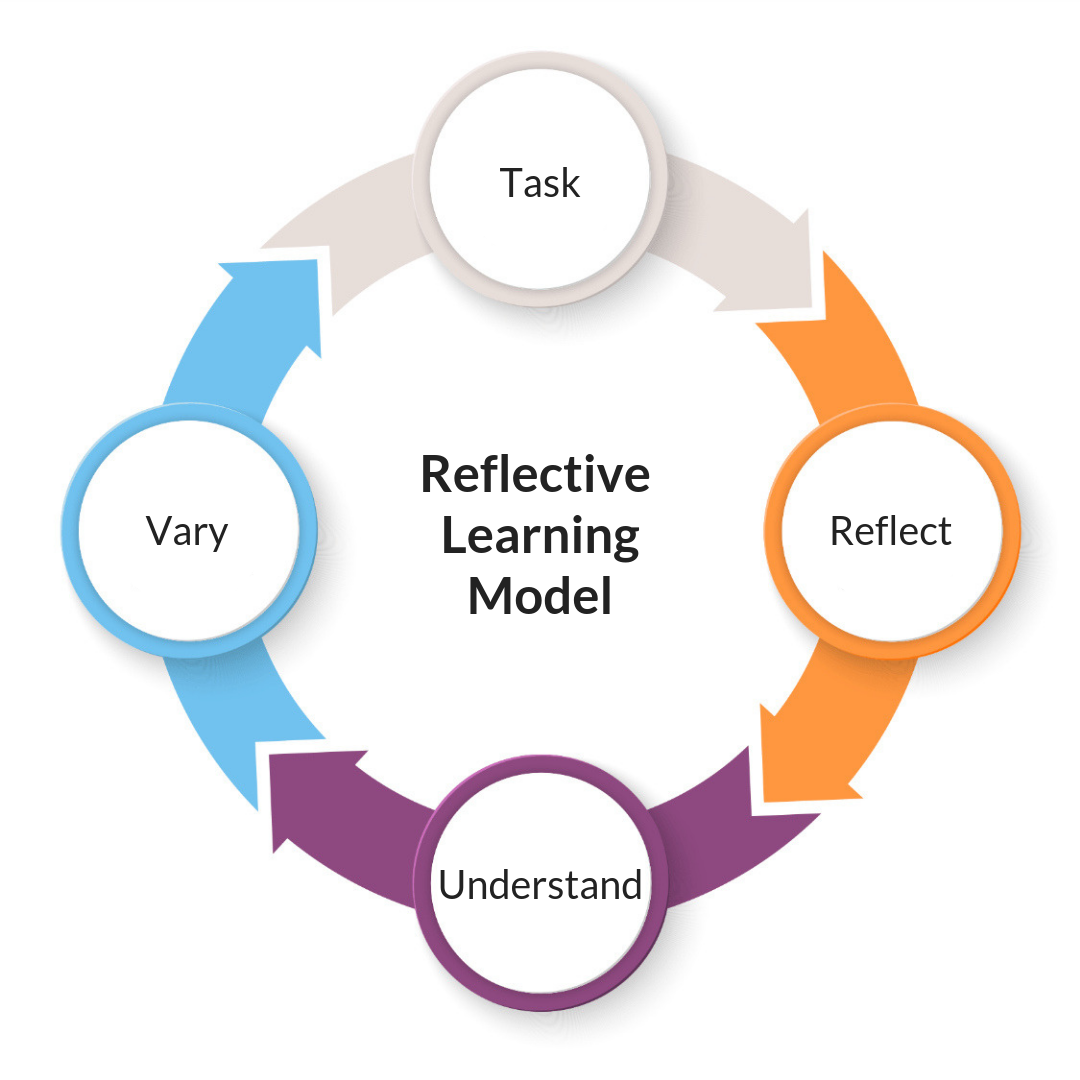Unlock your Teaching and Learning Potential
Individual Learning Styles and the Reflective Learning Cycle.
This article was originally published in ProView Magazine in September of 2018. ProView is a publication of the BC Committee of the Canadian Ski Instructors Alliance. Download the original article HERE.
As instructors, we know that no two learners are the same. What works for one student, may not for the next. By understanding individual learning styles and applying this to the Reflective Learning Cycle, we can deepen our own understanding, and improve our ability to teach, and our student’s ability to learn.
The Reflective Learning Cycle (Diagram 1.1), adopted by the CSIA, is a student-centered approach derived from David Kolb’s Experiential Learning Theory. The cycle provides experiences for students to grasp and transform into learning.
The goal is to engage our students in the process of learning so that they take away an understanding and an ability to replicate the desired outcome in a range of situations. The student gains an understanding of cause and effect and the ability to self-assess, rather than relying on an instructor for feedback and confirmation.
In order for effective learning to occur, all phases in the Reflective Learning Cycle must be completed.
Diagram 1.1: Reflective Learning Cycle
By understanding the different ways that individuals approach learning, we can personalize our tactics and speed up the process of getting our students to a place of understanding and applying what they’ve learned.
There are a number of documented theories on individual learning styles. For our purposes, I’ve provided a simplified approach that describes an individual’s dominant learning style as a combination of two sets of variables.
Diagram 1.2 illustrates these variables on a continuum. On the horizontal axis is how we approach a task; we either DO or WATCH. On the vertical axis is how we respond or perceive the task; we either THINK or FEEL.
Diagram 1.2: Learning Styles
Learners presented with a new situation will instinctively proceed based on their dominant learning style. They DO or WATCH and FEEL or THINK. Let’s take a look at this in the context of a ski lesson using the Reflective Learning Cycle.
Within the first phase of the cycle, we design a task, assign it to our students and facilitate reflection. It is important to consider how we do this, taking into account, the different learning styles. Some students will want to jump right in and give it a try – DO the task, while others will want to WATCH your demonstration first. Some students will relate to a FEELING you describe OR they may be looking for a detailed explanation. By applying this to our lessons, our students will be better able to reflect on their experience and transform it into learning. Consider this example with a typical intermediate student who uses a large traverse between turns to control speed:
Skiing Objective: Speed management in a round, medium-sized turn.
Task Design: Medium-sized, round turns down a groomed intermediate run. How - By leading the turning effort with the lower body. Priming - You will FEEL more weight on the outside foot and will be able to continue this turning effort. This will allow you to FEEL control over your speed and will produce a skidded arc in the snow. You will notice (THINK) the smaller size and rounder shape of your turns and how friction helps to control speed.
By taking into account learning styles when we prime our students we are now able to ask specific questions to guide their reflections.
Did you feel more weight on your outside foot? Were you able to control your speed? Did you notice the shape of your turns and how they became shorter? Looking back up the hill, can you see the skidded track on the snow?
The way our students answer will give us clues as to their preferred learning style. “When I watched your demonstration I noticed…” “I felt…” “Can you explain that again?” These statements/questions from your students can help inform you to determine how the lesson is going to proceed.
If your student is able to perform the task AND if their reflections match your observations, they are on their way to understanding cause and effect.
If your student is either not able to perform the task OR if their reflection does not match your observations, your next move is either to clarify the task, or redesign it completely.
Whichever situation you find yourself in, this is a crucial point in the lesson. As instructors, once our students achieve some degree of understanding we tend to want to rush to vary the task and move on. I encourage you to use your knowledge of learning styles to add depth to your student’s understanding. As part of the VARY phase in the reflective learning cycle, we can even challenge our students to experience a task using their less dominant learning style. For example, add a technical cue for the person who relates to a feeling or ask the thinker to describe what a particular movement feels like. Give your students time and space to try the task and reflect. Facilitate this process so that experiences are transformed into durable learning and your students can take their new skill and apply it on their own.
References:
https://www.simplypsychology.org/learning-kolb.html
https://www.businessballs.com/self-awareness/kolbs-learning-styles-64/
[1] https://www.businessballs.com/self-awareness/kolbs-learning-styles-64/

